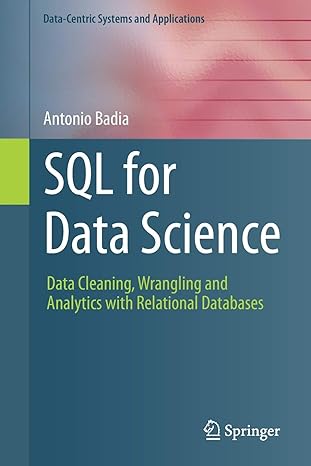Answered step by step
Verified Expert Solution
Question
1 Approved Answer
1. Finite automata and regular languages (a) Construct a DFA and a regular expression for the language L = {x E {0,1} x contains a

1. Finite automata and regular languages (a) Construct a DFA and a regular expression for the language L = {x E {0,1} x contains a (b) Construct a DFA and a regular expression for the language L rE 10, 1) length of r is not (c) Construct a 6-state NFA and a regular expression for the language L-(x E {a,b)" | x ends in substring "100" divisible by 3) "ba" or has exactly two a's J, such that your NFA has at least one e-arrow and also multiple transitions on the same symbo the general construction described in the proof that NFAs can simulate regular expressions in words the language this NFA accepts (d) Construct an NFA from a regular expression ((aU(ab)*)c) over the alphabet a, b, c, using (e) Given the following NFA, construct a DFA using the construction from the classotes. Describe 8-8-8 42
Step by Step Solution
There are 3 Steps involved in it
Step: 1

Get Instant Access to Expert-Tailored Solutions
See step-by-step solutions with expert insights and AI powered tools for academic success
Step: 2

Step: 3

Ace Your Homework with AI
Get the answers you need in no time with our AI-driven, step-by-step assistance
Get Started


